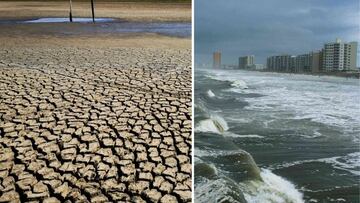We're headed into a La Niña winter: Does that mean it'll be especially cold?
The National Oceanic and Atmospheric Administration has announced the La Niña phenomenon will likely influence winter conditions for most of the country.


The National Oceanic Atmospheric Administration has released its winter outlook for the United States, and says a slowly developing La Niña is likely to affect weather conditions in the winter season through most of the country.
The weather agency’s Climate Prediction Center gave its forecast for December 2024 through February 2025, including information on temperatures, precipitation, and drought.
The entire northern tier of the country will likely experience wetter-than-average conditions, particularly in the Pacific Northwest, the Great Lakes region, and northern and western Alaska. Portions of Ohio, Indiana, and Kentucky will have the strongest probabilities of having more precipitation than usual.
The opposite will be true for the south, with drier-than-average conditions forecast from the Four Corners region of the Southwest to the Southeast, Gulf Coast, and lower mid-Atlantic states.
READ ALSO: Coastal flood warnings issued across the East Coast
La Niña is favored to emerge in September-November (60% chance) and is expected to persist through January-March 2025. A #LaNina Watch remains in effect. #ENSO https://t.co/5zlzaZ1aZx pic.twitter.com/SwlYIgkki0
— NWS Climate Prediction Center (@NWSCPC) October 10, 2024
We’re headed into a La Niña winter: Does that mean it’ll be especially cold?
The La Niña weather phenomenon is predicted to develop later in the fall, causing the winter storm track to head northward. This will bring wet weather to the north, and drier and warmer conditions to the south.
Central and southern Plains of the country can expect drought conditions to continue and worsen. States bordering the Gulf of Mexico, Texas, and southern New Mexico will have the greatest likelihood for drier-than-average conditions.
READ ALSO: Warning for ‘devil wind’ in California
Some areas may find some relief from drought conditions, particularly the Ohio River Valley, the Great Lakes region and parts of the northwestern U.S., including eastern Washington and Oregon and northern and central Idaho.
Related stories
La Niña will also nudge temperatures both up and down, with the southern tier of the country to the eastern Great Lakes, eastern seaboard, New England and northern Alaska likely to have warmer-than-average weather.
Southern Alaska and the Pacific Northwest to the northern High Plains are predicted to experience lower-than-average temperatures, so residents in these areas must prepare for a colder winter.


Complete your personal details to comment